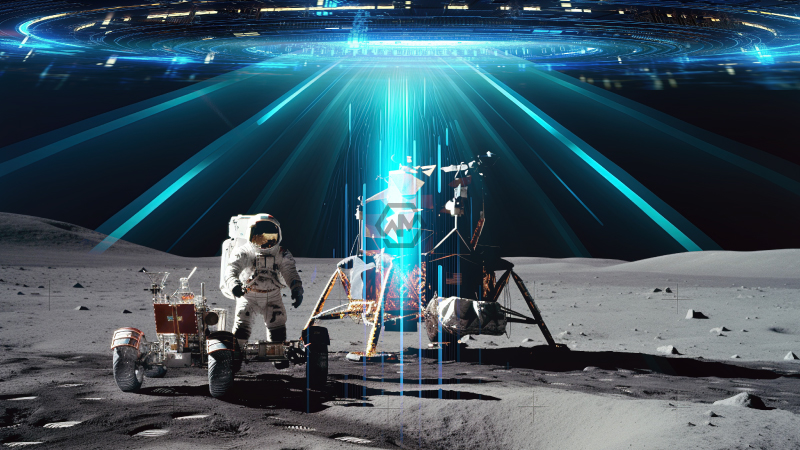- Blockchain technology will be used on Earth to verify the data protected in these cubes.
- When Artemis 2 is launched in November 2024, NASA’s Artemis mission will begin its second phase.
- After installation, the data will be checked for accuracy and integrity using blockchain technology back on Earth.
In February 2024, a cargo carrying “data cubes” will be launched to the Moon by the National Aeronautics and Space Administration (NASA) of the United States, along with the Isle of Man and Florida-based Lonestar. Blockchain technology will be used on Earth to verify the data protected in these cubes.
When NASA launches Artemis 3, its second crewed mission, in 2025, assuming all goes according to plan, the same blockchain technology will, once and for all, irrevocably, authenticate that humans have landed on the Moon.
Upcoming Moon landing
When Artemis 2 is launched in November 2024, NASA’s Artemis mission will begin its second phase. The four astronauts on board that crewed mission will depart Earth, orbit the Moon, and then come back to the planet. Though it doesn’t quite compare to setting foot on lunar land, Artemis 2 is expected to be the last test flight before the US government sends people back to the Moon’s surface with Artemis 3.
Lonestar and the Isle of Man are working together to develop long-term lunar storage systems that will run on solar power and don’t need any additional infrastructure to set up as one of the numerous scientific missions taking place during the Artemis journeys.
The exercise, which is described as “digital franking” by the BBC‘s Science Focus, would reportedly include the production of digital stamps that will be kept in the Moon’s data cubes. After installation, the data will be checked for accuracy and integrity using blockchain technology back on Earth.
Any astronauts landing on the Moon in the future may utilize the data cubes to check in on the Moon thanks to the interesting byproduct of blockchain’s immutable nature. The blockchain may be used to confirm the astronauts’ communication, thus dispelling any rumors of a plot to sabotage the future Moon landing.
During an interview with Science Focus, the technology chief at Digital Isle of Man said that NASA had a difficult time refuting claims that the 1960s and 1970s crewed Moon landings were faked.
The blockchain should act as an irrefutable record of the following humans touching the Moon, even though it may not be able to dispel conspiracy theories about the 20th-century lunar landings.



